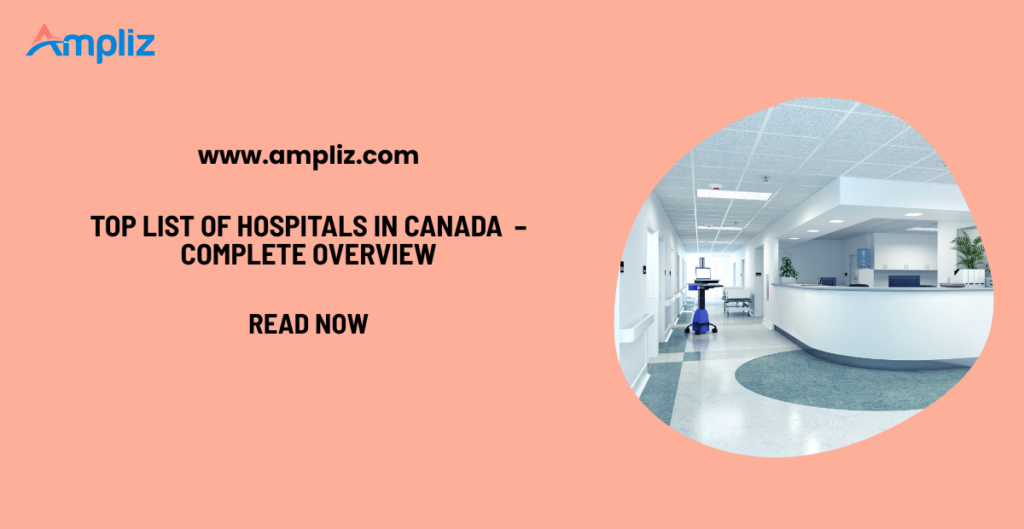Hospitals are where clinical decisions, procurement choices and large-scale patient care pathways collide. Whether you sell medical devices, diagnostics, hospital-grade disposables, digital health solutions, or services such as staffing and training, targeting the right hospitals and the right people inside them changes campaign ROI from “hopeful” to measurable.
Canada’s hospital landscape is a mix of large tertiary academic centres (Toronto General, Vancouver General, The Ottawa Hospital), regional referral hospitals (Foothills Medical Centre, Halifax’s QEII), and hundreds of community hospitals that provide essential acute and emergency services. National purchasing often occurs through provincial health authorities or integrated networks, while specialty procurement (cardiac devices, imaging, oncology equipment) is frequently handled by hospital-level procurement teams, clinical program leads and physician champions.
This guide gives you:
- a curated Top-20 list of Canada’s highest-profile hospitals,
- the latest high-level system facts (hospital counts and hospitalization volumes),
- practical tactics to reach hospital decision-makers, and
- why using Ampliz healthcare data intelligence improves outreach precision and ROI.
How many hospitals are in Canada
- Number of hospitals in Canada : 1,017 hospitals (reported as the total count used by national rankings and facility inventories as of 2024/2025).
- Hospital activity: In 2023–2024 there were about 3.05 million acute inpatient hospitalizations across Canada. Average length-of-stay in that year was ~7.3 days. These volumes show the scale of hospital operations and the flow of patients that drive demand for equipment, consumables and services.
Why this matters: the total number (1,017) demonstrates that while there are many hospitals, procurement budgets and decision-making power are concentrated in a smaller group of large academic and regional centres — which is why a Top-20 list is valuable for prioritizing sales and marketing effort.
Top 20 Hospitals in Canada (2025)
Below is a curated Top-20 list based primarily on Newsweek’s World’s Best Hospitals — Canada rankings (2025). For each entry: rank, hospital name, city/province and a one-line specialty note.
| Rank | Hospital | City, Province |
|---|---|---|
| 1 | Toronto General Hospital — University Health Network (UHN) | Toronto, ON |
| 2 | Sunnybrook Health Sciences Centre | Toronto, ON |
| 3 | Mount Sinai Hospital | Toronto, ON |
| 4 | North York General Hospital | Toronto, ON |
| 5 | Montreal General Hospital — McGill University Health Centre (MUHC) | Montréal, QC |
| 6 | Centre hospitalier de l’Université de Montréal (CHUM) | Montréal, QC |
| 7 | St. Michael’s Hospital — Unity Health Toronto | Toronto, ON |
| 8 | Jewish General Hospital | Montréal, QC |
| 9 | Vancouver General Hospital | Vancouver, BC |
| 10 | Toronto Western Hospital — University Health Network (UHN) | Toronto, ON |
| 11 | The Ottawa Hospital | Ottawa, ON |
| 12 | Hamilton General Hospital (HHS / Hamilton Health Sciences) | Hamilton, ON |
| 13 | Foothills Medical Centre | Calgary, AB |
| 14 | QEII Health Sciences Centre (Centennial/ Victoria buildings) | Halifax, NS |
| 15 | Jewish General / Centre intégré universitaire de santé et de services sociaux (local variation) | Montréal, QC |
| 16 | Hospital for Sick Children (SickKids) | Toronto, ON |
| 17 | Vancouver Island / Royal Jubilee / Victoria General cluster | Victoria, BC |
| 18 | Jewish / Montreal area specialty sites | Montréal, QC |
| 19 | London Health Sciences Centre (LHSC) | London, ON |
| 20 | St. Paul’s Hospital | Vancouver, BC |
Why these hospitals are priority targets for suppliers & marketers
- Concentrated purchasing power. Large tertiary hospitals and multi-campus networks manage big capital budgets (imaging, operating room upgrades, EMR/IT, specialty implants). A single procurement win can translate into multi-year, multi-site contracts.
- High case volumes & specialty programs. Hospitals with high volumes of cardiac, oncology, transplantation or trauma cases are consistent buyers of disposables, implants, monitoring tech and software — and they maintain clinical trial pipelines that create demand for diagnostics and niche devices.
- Research & teaching roles. Academic hospitals drive innovation adoption earlier (they evaluate new tech, participate in trials, and publish outcomes). Marketing to clinician-researchers opens channels to broader national adoption.
- Network effects & provincial procurement. Hospitals often buy via provincial group purchasing or via integrated health authorities (Alberta Health Services, UHN, etc.). Landing champions inside a network can unlock system-level rollouts.
How to reach hospital decision-makers in Canada
1. Define the buying persona(s)
- Procurement director / supply chain manager (budget holder)
- Clinical program lead / service chief (physician or nurse champion)
- Biomedical engineering / clinical engineering (technical evaluation)
- Clinical trial coordinator / research office (for new devices)
Map each persona to the hospital level (site vs. network vs. provincial).
2. Prioritize by impact × likelihood
Use the Top-20 list for “high impact” targets (big budgets and reputation). Then add a layer of likelihood: does your product fit a hospital’s specialty footprint? For example, target cardiac device reps first to Toronto General and The Ottawa Hospital; pediatric devices to SickKids.
3. Build an accurate contact list (not guessed titles)
Do not rely on generic emails. You need:
- procurement office main number + regional procurement contacts,
- names and emails of clinical leads (often listed on hospital sites or publications),
- biomedical engineering contacts,
- purchasing contract expiry windows (if publicly available).
4. Multi-channel outreach sequence
- Step 1: Personalized email to clinical champion with a concise 2-line value statement + one relevant case study.
- Step 2: Follow up with an invitation to a targeted webinar or demo (co-present with a clinician or health economist).
- Step 3: Phone outreach to procurement & clinical engineering anchored around ROI, patient outcomes and interoperability.
- Step 4: Offer a pilot or limited evaluation (clear endpoints and data capture to support procurement approvals).
5. Content that converts
- Short one-page clinical evidence brief (outcomes, OR time saved, length-of-stay impact).
- Economic ROI calculator customized to provincial funding models.
- Patient stories, peer hospital case studies, and regulatory/compliance documentation tailored to Canadian standards.
Why Ampliz healthcare data intelligence matters?
Reaching hospitals is not just about more dials — it’s about precision.
What Ampliz provides (how it fixes common problems):
- Accurate contact datasets for hospital procurement, clinical leads, biomedical engineering and executive teams — curated and verified for bounce rates and role changes.
- Network & affiliation mapping so you know whether to approach a single hospital site or a network/provincial purchasing body.
- Segmentation by specialty, bed count, and service lines so campaigns target high-fit hospitals (e.g., transplant centres, pediatric specialty hospitals).
- Enrichment & intent signals (when available) so sales teams can prioritize leads with recent procurement activity or technology replacement cycles.
Conclusion
- Total hospitals in Canada: approximately 1,017.
- Top-20 map: Use the curated list above to prioritize outreach to high-impact academic, tertiary and regional referral centres (Toronto General/UHN, Sunnybrook, Mount Sinai, Vancouver General, The Ottawa Hospital, SickKids, etc.).
- How to reach them: build persona-based lists, use multi-channel sequences, present clinical & economic evidence, and structure pilots with measurable endpoints.
Why marketing them matters: Hospitals not only purchase equipment and services — they set standards, influence regional procurement, and catalyze wider adoption across provincial networks. Winning at a Top-20 hospital can create a ripple effect across hundreds of community hospitals and health networks.
Final marketing lift: Use Ampliz healthcare data intelligence to target verified procurement and clinical contacts, map network affiliations, and prioritize the hospitals where your product fits the clinical profile — this substantially increases close rates and reduces wasted outreach.



